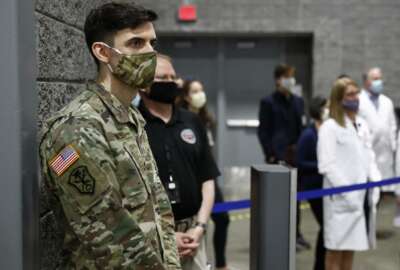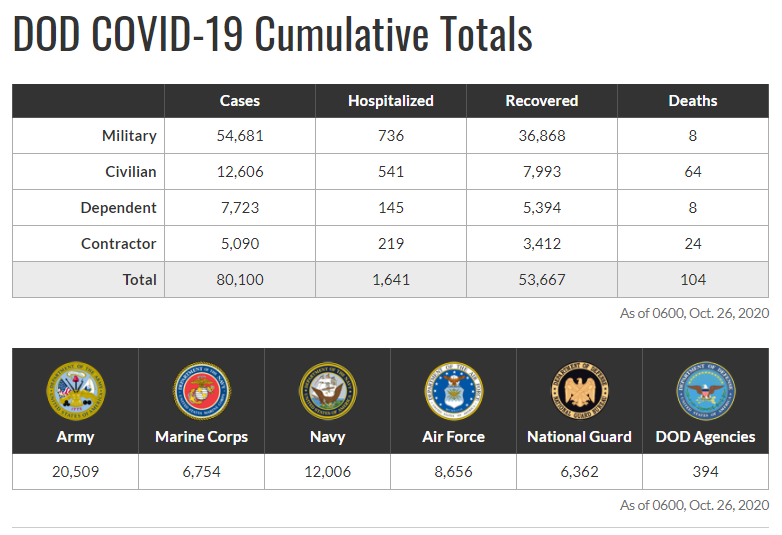
Army keeping an eye on training as COVID cases rise
The Army says it is keeping an eye on cases, but has learned lessons since the spring.
The Army has been successfully continuing some of its training, wargaming and accession of soldiers during the COVID-19 pandemic, but cooler weather will prove to be a new challenge as winter approaches.
In September, the Army’s 25th infantry conducted its expert soldier badge training, which involved more than 900 soldiers, which finished COVID free.
On a larger scale, the Army Center for Initial Military Training (USACIMT) has about 46,000 soldiers training across Army Training and Doctrine Command.
“As of today, there’s less than 3% of those trainees who have tested positive for COVID-19,” USACIMT leader Maj. Gen. Lonnie Hibbard told reporters Monday. “We do multiple screenings prior to them arriving at our one of our four army training centers. Then, once those trainees arrive at those training centers, we do 100% COVID testing on all new recruits before they start training.”
In Europe, soldiers are using a bubble system and abiding by host countries’ quarantine rules when conducting multinational exercises.
However, the U.S. and Europe are starting to see coronavirus numbers nearing or even surpassing the peaks of the spring and summer, putting training at risk once again.
“We have to maintain our discipline. We do rely on the cadets from how they cohort to how they go to class and how they can remain disciplined to stop the spread,” said Director of West Point’s Department of Military Instruction Col. Alan Boyer. “We randomly select 1% of the corps and staff and faculty and test them. We’re trying to try to see if the if the virus does enter itself into the cadet or faculty area. We have a plan with a playbook so we can then separate isolate and quarantine as required and stop the spread. But, we are concerned with the coming weather.”
Brig. Gen. Christopher Norrie at 7th Army Training Command in Germany said it’s a delicate balance between training to retain readiness and keeping soldiers healthy to retain readiness.
“We continue to fight for opportunities to train with a real focus on our training objectives,” he said. “Right now, as we work our way through increasing numbers in Europe, we are in a different place than we were back in March. We have an exceptionally mature testing capability and capacity here. Our leaders at every echelon have a very mature understanding of the environment, and the potential range of threats. We also have very established battle drills to build a bubble before we train to ensure that soldiers, leaders and units are isolated for a period of time.”
Norrie said the most effective measures are social distancing, quarantining and wearing masks.
As of Monday, more than 20,500 soldiers have been diagnosed with COVID-19.
The Defense Department as whole has seen more than 80,000 cases with 104 service members, civilians, dependents and contractors dying from the disease.

Copyright © 2025 Federal News Network. All rights reserved. This website is not intended for users located within the European Economic Area.
Scott Maucione is a defense reporter for Federal News Network and reports on human capital, workforce and the Defense Department at-large.
Follow @smaucioneWFED
Related Stories




